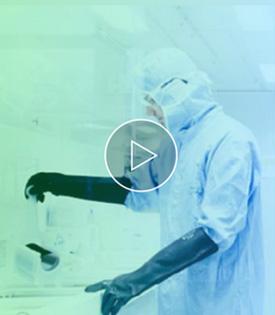Is there a better way to eliminate endotoxin contamination? Now there is
LAL Testing: Does it really measure endotoxin? Limulus amebocyte assay testing is an FDA-approved method for detection of endotoxins and the most common assay used; however the LAL assay is activated solely by the 4´-monophosphoryldiglucosamine backbone of LPS. LAL activity is minimally influenced by acylation pattern of LPS, the key determinant of endotoxicity in eukaryotic cells. The LAL assay also recognizes a wider spectrum of LPS/lipid A variants than the central cellular endotoxin sensor system of the human immune cell system. As such, false positive results can and will result due to the lack of specificity of the assay. A simple Ni-column purification step for proteins produced from ClearColi™ cells will reduce LAL response levels by 95% or greater. However, the residual EU measurements are due to the non-specific nature of the assay unless extraneous LPS contamination from other sources is present. Alternative toxicity assays, such as those using HEK-Blue cells suggest that even in the presence of EU levels above threshholds normally targeted by researchers, the actual immunogenic effects from ClearColi™-derived proteins are non-existent. Due to the non-specificity of the LAL assay when combined with lipid IVA from ClearColi™, it is suggested that researchers consider alternative methods of endotoxin measurement.
Protein Expression Levels: The relative production efficiency of endotoxin free ClearColi™ BL21(DE3) competent cells has been compared to normal BL21(DE3) cells using recombinant proteins. Although overall growth rates of the ClearColi are slower, final protein production levels are very similar when measured from equal cell densities.
Instead of removing lipopolysaccharide (LPS) contamination from your protein or plasmid DNA preparations, eliminate the LPS at the source. Genetically modified LPS from a novel E. coli strain produces functionally clean recombinant proteins and plasmids. ClearColi™ BL21(DE3) cells are the first commercially available competent cells with a modified LPS that does not trigger the endotoxic response in human cells. ClearColi™ cells lack outer membrane agonists for hTLR4/MD-2 activation; therefore, activation of hTLR4/MD-2 signalling by ClearColi™ is several orders of magnitude lower compared with E. coli wild-type cells, and heterologous proteins prepared from ClearColi™ are virtually free of endotoxic activity
Información para pedidos: Each ClearColi BL21(DE3) Electrocompetent Cell Kit contains: the indicated ClearColi BL21(DE3) Electrocompetent Cells in DUO packaging (2 transformations per tube), Expression Recovery Medium (lactose minus), pUC19 Positive Control Plasmid, and complete protocols.
